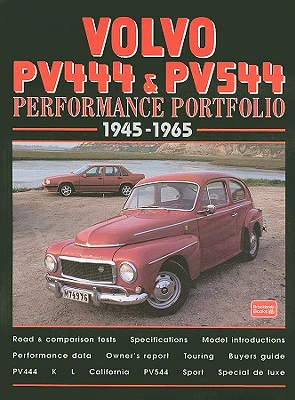==============================================
The Sharpe Ratio is one of the most widely used metrics in finance for evaluating risk-adjusted returns. For portfolio managers, hedge funds, and even retail investors, understanding how Sharpe Ratio affects portfolio performance is essential to optimizing strategies, balancing risk, and achieving sustainable returns.
This article will dive deeply into the Sharpe Ratio: what it measures, why it matters, how it impacts portfolio construction, and how different strategies influence it. We’ll also explore personal experiences, case studies, and the latest industry practices, ensuring you leave with actionable insights.
What is the Sharpe Ratio?
The Sharpe Ratio, developed by Nobel laureate William F. Sharpe, measures the excess return (return above the risk-free rate) earned per unit of risk (standard deviation of returns).
Formula:
SharpeRatio=Rp−RfσpSharpe Ratio = \frac{R_p - R_f}{\sigma_p}SharpeRatio=σpRp−Rf
Where:
- RpR_pRp = Portfolio return
- RfR_fRf = Risk-free rate
- σp\sigma_pσp = Portfolio standard deviation (risk)
A higher Sharpe Ratio indicates a portfolio delivers more return per unit of risk, making it a key benchmark for comparing investment strategies.
Why Sharpe Ratio Matters for Portfolio Performance
1. Measures Risk-Adjusted Performance
Raw returns can be misleading. Two portfolios may both deliver 10% annual returns, but if one is twice as volatile, the risk-adjusted performance is lower. Sharpe Ratio corrects this imbalance.
2. Enables Cross-Strategy Comparisons
Whether evaluating equities, bonds, hedge funds, or alternative investments, Sharpe Ratio standardizes performance measurement across different strategies.
3. Guides Capital Allocation
Portfolio managers use Sharpe Ratios to decide which assets deserve more allocation. A higher Sharpe Ratio asset contributes to improving the portfolio’s efficiency.
4. Supports Risk Management
Understanding why Sharpe Ratio is important for risk management helps prevent portfolios from chasing unsustainable returns at the expense of hidden volatility.
How Sharpe Ratio Affects Portfolio Construction
1. Diversification and Sharpe Ratio
Adding uncorrelated assets can improve the overall Sharpe Ratio, even if those assets have lower standalone returns. Diversification reduces portfolio volatility without proportionally reducing returns.
2. Leverage and Sharpe Ratio
Leverage magnifies both returns and risks. If a portfolio already has a high Sharpe Ratio, leverage may improve it further. Conversely, if risk is poorly managed, leverage worsens Sharpe Ratios drastically.
3. Asset Class Selection
Choosing between equities, fixed income, alternatives, or derivatives significantly impacts Sharpe Ratios. Stable fixed-income portfolios may have lower returns but higher Sharpe Ratios due to lower volatility.

Methods to Improve Portfolio Sharpe Ratio
1. Volatility Reduction Through Hedging
Using options, futures, or inverse ETFs, investors can smooth portfolio volatility. This reduces the denominator (σp\sigma_pσp) in the Sharpe formula, raising the ratio.
Pros:
- Provides downside protection.
- Improves portfolio stability.
Cons:
- Hedging costs can erode returns.
- May underperform during bullish markets.
2. Optimizing Asset Allocation
Dynamic rebalancing and factor-based investing can enhance Sharpe Ratios. Allocating capital towards low-correlation, higher-efficiency assets often improves risk-adjusted returns.
Pros:
- Enhances long-term consistency.
- Improves resilience to market shocks.
Cons:
- Requires frequent monitoring.
- Transaction costs may rise.
Comparing Two Approaches: Hedging vs. Allocation Optimization
| Factor | Hedging | Allocation Optimization |
|---|---|---|
| Goal | Reduce volatility | Improve efficiency through diversification |
| Impact on Sharpe | Increases by lowering denominator | Increases by improving numerator/denominator balance |
| Best For | Volatile portfolios | Long-term investors |
| Drawbacks | Costly, timing-sensitive | Requires expertise, ongoing management |
Recommendation: Allocation optimization generally provides more sustainable Sharpe Ratio improvement for most investors. Hedging is better suited for tactical adjustments in turbulent markets.
Case Study: Sharpe Ratio in Action
A portfolio manager compared two portfolios:
Portfolio A (Aggressive Equity):
- Return: 15%
- Volatility: 20%
- Sharpe Ratio: 0.75
- Return: 15%
Portfolio B (Diversified Multi-Asset):
- Return: 12%
- Volatility: 10%
- Sharpe Ratio: 1.20
- Return: 12%
Despite lower returns, Portfolio B outperformed Portfolio A on a risk-adjusted basis. This demonstrates why investors should not chase returns blindly but instead focus on Sharpe Ratio optimization strategies.
Sharpe Ratio illustrates the trade-off between risk and return, helping identify efficient portfolios.

Sharpe Ratio vs. Sortino Ratio
While Sharpe Ratio penalizes both upside and downside volatility, the Sortino Ratio focuses only on downside risk. For investors who care more about downside protection, Sortino Ratio may provide a clearer picture.
However, Sharpe remains more widely used because of its universal applicability across asset classes and strategies.
For further clarity, investors often study how Sharpe Ratio differs from Sortino Ratio when fine-tuning their strategies.
Practical Tips for Investors
- Always compare Sharpe Ratios across similar timeframes and benchmarks.
- Use rolling Sharpe Ratios to spot consistency versus one-off results.
- Avoid over-optimizing Sharpe Ratios, as extreme strategies may fail in real-world conditions.
- Use Sharpe alongside other metrics like Maximum Drawdown and Information Ratio for a holistic view.
FAQ: How Sharpe Ratio Affects Portfolio Performance
1. What is a “good” Sharpe Ratio?
Generally, a Sharpe Ratio above 1.0 is considered good, above 2.0 is very good, and above 3.0 is excellent. However, context matters—different asset classes and strategies have different expectations.
2. Can Sharpe Ratio be negative?
Yes. A negative Sharpe Ratio means the portfolio underperformed the risk-free rate, or that risk-adjusted returns are unfavorable. This signals poor performance.
3. How does Sharpe Ratio apply to retail investors?
For individual investors, Sharpe Ratio is a simple yet powerful way to compare mutual funds, ETFs, or personal portfolios. It highlights whether higher returns are achieved efficiently or recklessly.
Conclusion
The Sharpe Ratio is more than a performance metric—it is a risk-adjusted compass guiding investors toward sustainable strategies. By understanding how it affects portfolio performance, investors can avoid chasing raw returns and instead build balanced, resilient portfolios.
Whether you are a retail investor, a hedge fund manager, or an analyst, leveraging Sharpe Ratio insights helps you navigate modern markets with confidence.
If this guide helped you, share it with fellow investors and leave a comment below—let’s discuss how you use Sharpe Ratio in your portfolio strategy!
Would you like me to create a visual Sharpe Ratio comparison report template (with editable charts and risk-return plots) so you can use it for client presentations or portfolio reviews?

0 Comments
Leave a Comment